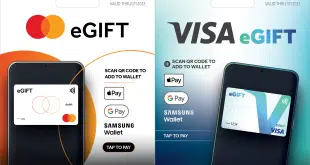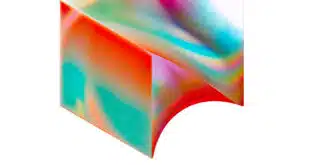A proposal to merge electronic check images with automated clearing house records, which first came to the fore at an industry trade show earlier this month, could become a reality?at least in a limited way–relatively soon. Backers of the plan, which include executives with at least two of the nation's largest banks, said at an industry event this week they hope to move quickly on the idea. “We'd like to see a pilot before the end of this year and volumes [of items] flowing next year,” said John G. Feldman, a senior vice president at Bank of America Corp. Feldman's comments came during a discussion by a panel of half a dozen advocates of the proposal who gave it a formal airing in Las Vegas at a Bank Administration Institute conference, following a presentation of it two weeks earlier at a conference sponsored by NACHA, the rules-setting body for the ACH. That urgency, among other things, is stirring considerable controversy and no small amount of passion among bankers, processors, and other parties with stakes in both image exchange and the ACH. This week's presentation immediately drew what some attendees saw as a cool if not outright hostile reaction from a segment of the audience, which was made up mainly of bankers and treasury-management professionals concerned with check imaging and processing. Some attendees questioned the rationale behind the proposal, while others feel its backers are moving too fast. One of the panelists told Digital Transactions News privately that the proposal will have to overcome what he sees as a deep-seated distrust of the ACH among some bankers concerned with check imaging. These bankers see the ACH, he said jokingly, as “the Anti-Christ.” Behind the proposal?and the urgency with which its backers would like to move?lies a sense of impatience with the progress of check image exchange, say observers. While image-exchange networks are reporting dramatically increased volumes?total monthly volume through all networks stood at 109.6 million items in March, up from 3.7 million in January 2005, according to figures gathered by the Electronic Check Clearing House Organization (ECCHO)?fewer banks than expected are prepared to settle on images, forcing the industry to deal in so-called substitute checks, or paper printouts of images, which were given legal status by the Check Clearing for the 21st Century Act (Check 21). This means banks are dealing with a growing volume of paper substitutes that in many cases are more expensive to handle than the original checks. According to ECCHO, the monthly volume of substitute checks?also known as image-replacement documents, or IRDs?reached more than 60 million by March, up better than ten-fold from the start of 2005. “We feel Check 21 needs to move faster than it is,” said panelist Fred Herr, senior vice president of retail payments at the Federal Reserve Bank of Atlanta. The so-called best-clearing proposal aims at attacking the problem by allowing banks of first deposit to convert the checks they receive into electronic funds transfers and then send the payments on to paying banks via the ACH. The twist is that each record would have attached to it an electronic link to the image, allowing paying banks to access the check when necessary. Unlike other ACH applications, this one would allow clearing of business checks as well as checks written by consumers. In this way, say backers, the proposal marries the ubiquity of the ACH?which reaches all routing and transit numbers of all financial institutions?with the fact that image exchange, while limited in reach so far, allows truncation of all items. “We would prefer image exchange, but not all banks have opened all their [routing and transit numbers] to image exchange,” said BofA's Feldman. What is now referred to as best clearing has been floating around for some time. Two bankers proposed something very similar two years ago at a NACHA conference (Digital Transactions News, April 7, 2004), for example, well before most image exchanges had gone live. This week, panelists stressed they have only just begun mapping out the proposal and are far from having worked out in detail how the transactions would work. A steering committee with working groups are now forming, panel members said. “This group has been together for a short time, we don't have all the answers,” said panelist Danne L. Buchanan, executive vice president of Zions Bancorporation and chief executive of NetDeposit Inc., a Check 21 software company owned by Zions. The absence of detail, combined with the sense of urgency, seemed to be most troubling to those who heard the proposal. Questions like how and where the images would be archived, and at what price, are still pending, for example, though panelists said they are aiming for a small handful of archives to hold all images. These archives, they said, would be certified in advance to be sure they could meet performance and security requirements. Another looming issue is that while banks of first deposit would have the option of choosing this or any other allowable method of clearing checks, paying banks receiving such ACH transactions would be mandated to clear them. Community banks will be “up in arms” if not allowed to opt out of any such plan, an executive with one small bank told Digital Transactions News at the conference. Even those who are hoping to participate in the pilot point to a number of areas of concern. Small banks may have difficulty accessing images when needed, said Ted Umhoefer, senior vice president of product management and industry relations at Fiserv Inc., a Brookfield, Wis.-based processor. And, since checks will be converted by banks, not merchants or billers, transaction details are likely to be spotty. “You have no idea who the payees were,” says Umhoefer. The absence of transaction detail could trigger customer-service issues for paying banks as account holders receive their statements. On top of this problem is that it remains unclear how consumers will authorize transactions. Such authorization, or at least notice to consumers, is required in other ACH applications. Again, Umhoefer says, the burden will be greater for small banks than for large ones. “I question what's the business case,” he says. “The business case for a large bank to run a dual system is a lot different from the business case for a small bank.” Still, he says, Fiserv is interested in playing a role in the proposed pilot. In the end, panelists stressed, the proposal will go as far as the industry wants it to. Said Buchanan: “If a lot of people feel really negatively about this, it's not going to get off the ground.”
Check Also
Consumers Plan to Use Tax Refunds To Pay Down Debt, ACI Finds
Paying down debt is one of the top ways consumers intend to spend their tax …





